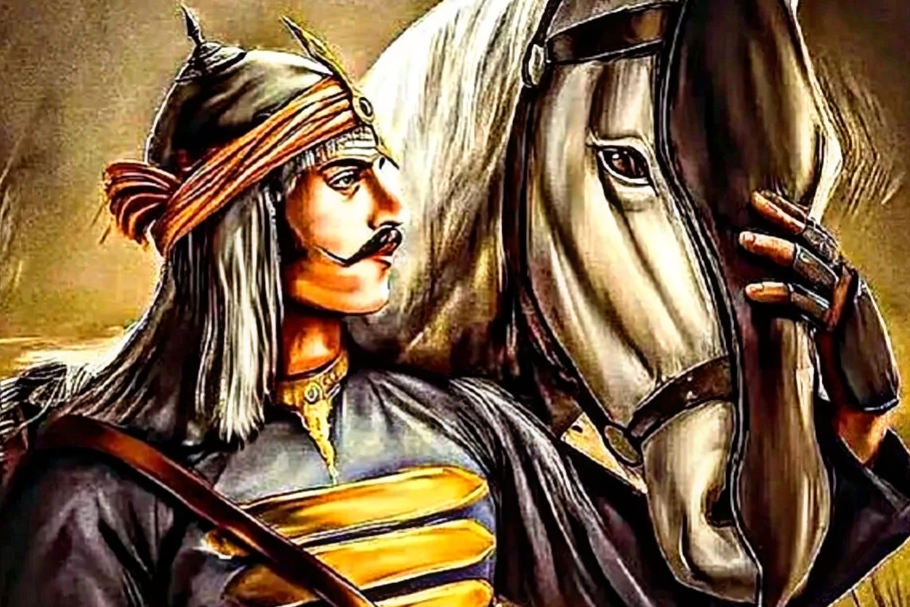Maharana Pratap, a name synonymous with courage, pride, and indomitable spirit, is one of the most iconic figures in Indian history. A ruler of Mewar in Rajasthan, Maharana Pratap is best known for his steadfast resistance against the Mughal Empire and his refusal to bow before Emperor Akbar. His life is a saga of heroism, patriotism, and unwavering determination to protect his land and uphold the honor of the Rajput code of conduct.
This detailed biography of Maharana Pratap delves deep into his life, battles, struggles, and enduring legacy, ensuring we understand why he is revered as one of India’s greatest warriors.
Early Life: The Shaping of a Warrior
Maharana Pratap was born on May 9, 1540, in the formidable Kumbhalgarh Fort, nestled in the Aravalli Hills. He was the eldest son of Maharana Udai Singh II, the 53rd ruler of Mewar, and his first wife, Maharani Jaiwanta Bai, a woman known for her piety and wisdom.
As the eldest of 25 siblings, young Pratap (affectionately called “Kika”) was raised to be the heir to the Sisodia dynasty, a lineage known for its valor and unwavering commitment to freedom. From a tender age, Pratap displayed signs of exceptional leadership and bravery. He received rigorous training in swordsmanship, archery, and horseback riding, along with lessons in governance and diplomacy.
Pratap’s early life was deeply influenced by his father’s challenges as a ruler. Mewar had already suffered significant losses under Udai Singh II, including the catastrophic fall of Chittorgarh Fort to Akbar in 1568. The Sisodia family, forced into exile, relocated to Udaipur, a new capital established by Udai Singh. These experiences profoundly impacted the young Pratap, shaping his resolve to restore Mewar’s lost glory.
The Struggle for the Throne
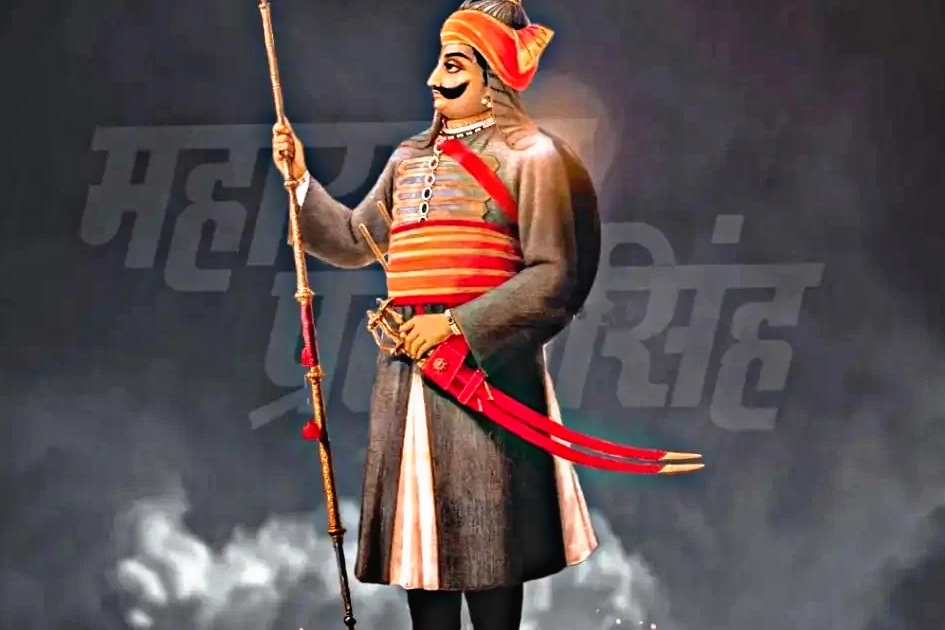
The transition of power following Maharana Udai Singh II’s death in 1572 was far from smooth. While Maharana Pratap was the rightful heir, internal politics led to his younger brother, Jagmal, being initially declared as the successor. However, Mewar’s nobles, recognizing Pratap’s leadership qualities and Jagmal’s lack of competence, intervened to ensure that Pratap ascended the throne.
As the 54th ruler of Mewar, Maharana Pratap took an oath to never accept Mughal sovereignty, vowing to protect Mewar’s independence at any cost. His reign was defined by this unyielding commitment, which set him apart from many other Rajput rulers who had submitted to Akbar’s authority.
Akbar’s Diplomacy and Maharana Pratap’s Defiance
By the time Maharana Pratap ascended the throne, the Mughal Empire was at its zenith under Emperor Akbar. Akbar’s strategy for consolidating power involved forming alliances with Rajput rulers through diplomacy, intermarriage, and military might. Prominent Rajput kingdoms such as Amber (Jaipur) and Marwar (Jodhpur) had already aligned with the Mughals, securing their positions as vassal states within Akbar’s empire.
However, Maharana Pratap refused to follow suit. For him, Mewar’s independence and the honor of the Sisodia dynasty were non-negotiable. Akbar, keen to bring Mewar into his fold, sent several emissaries, including Raja Man Singh and Todar Mal, to negotiate with Pratap. Despite repeated attempts, Pratap remained firm in his defiance, refusing to recognize Akbar as his overlord.
Pratap’s refusal was not merely an act of political rebellion; it was a matter of personal and cultural pride. The Sisodia Rajputs had always upheld their independence, and submission to a foreign ruler, even one as powerful as Akbar, was seen as a betrayal of their heritage.
The Battle of Haldighati: A Testament to Valor
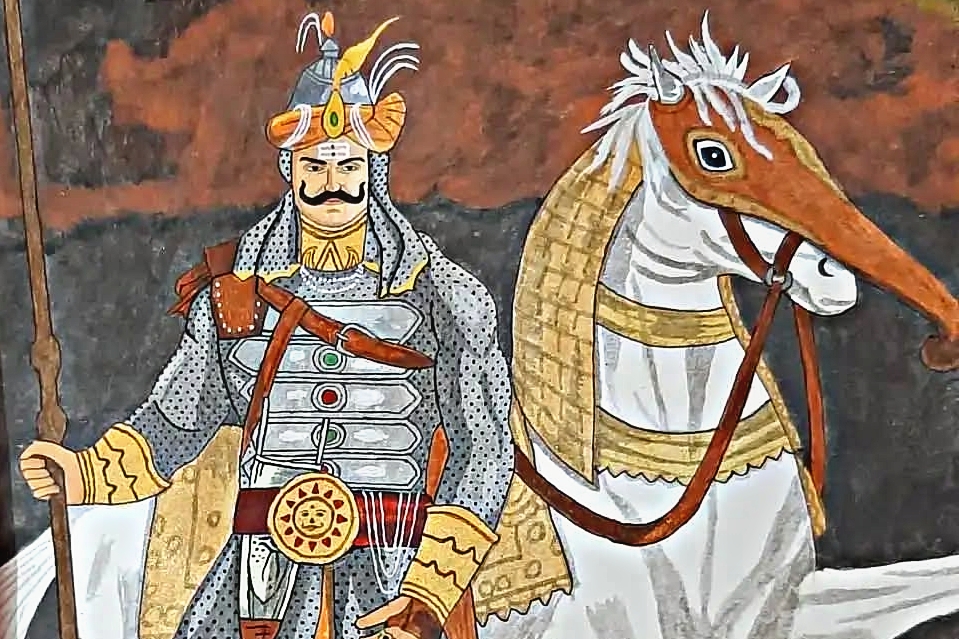
The conflict between Maharana Pratap and Akbar culminated in the legendary Battle of Haldighati, fought on June 18, 1576. This battle is one of the most celebrated episodes in Indian history, symbolizing resistance against oppression and the courage of the Rajputs.
Setting the Stage
Akbar, frustrated by Maharana Pratap’s refusal to submit, ordered a military campaign against Mewar. He appointed Raja Man Singh, a Rajput general loyal to the Mughal court, to lead the Mughal forces. Maharana Pratap, aware of the imminent threat, prepared for battle with his army, comprising approximately 20,000 soldiers, including Bhil tribesmen who supported him.
The Mughals, with a force of nearly 80,000 troops, vastly outnumbered Maharana Pratap’s army. Despite the odds, Pratap resolved to defend Mewar with every ounce of his strength.
The Battle Unfolds
The battle took place in the Haldighati Pass, a narrow mountain gorge that played to Pratap’s advantage. The Rajputs fought valiantly, using guerrilla tactics to counter the Mughal army’s superior numbers and artillery. Maharana Pratap himself led from the front, wielding his fearsome two-handed sword and riding his loyal horse, Chetak.
One of the most iconic moments of the battle occurred when Chetak, despite being gravely injured, leaped onto the elephant carrying Raja Man Singh, nearly unseating the Mughal general. This daring act showcased the unbreakable bond between Maharana Pratap and Chetak.
Outcome and Legacy
Although the Mughals emerged victorious in the battle, Maharana Pratap managed to escape, ensuring the survival of Mewar’s resistance. The Battle of Haldighati, while not a strategic win for Pratap, became a symbol of Rajput valor and the spirit of freedom.
Life in Exile: Guerrilla Warfare and Hardships
After the Battle of Haldighati, Maharana Pratap faced immense challenges. The Mughals tightened their grip on Mewar, forcing Pratap and his family to retreat into the Aravalli Hills. During this period, Pratap adopted guerrilla warfare tactics, launching surprise attacks on Mughal outposts and supply lines.
Despite the hardships, Pratap’s resolve remained unshaken. Historical accounts describe the extreme poverty faced by his family, who were forced to subsist on wild fruits and grass. Yet, Maharana Pratap refused to compromise, choosing to endure suffering rather than submit to Mughal rule.
His resilience eventually inspired his followers and rekindled hope among the people of Mewar. Over time, Maharana Pratap began reclaiming lost territories, including key fortresses like Kumbhalgarh and Gogunda.
Chetak: The Loyal Warhorse
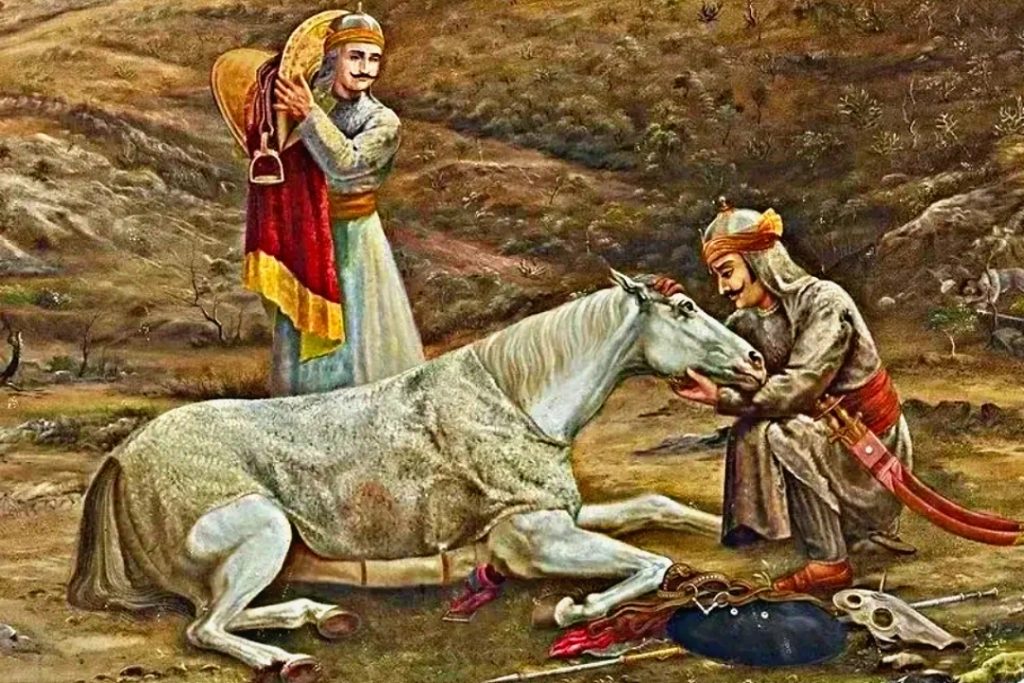
Maharana Pratap’s bond with his horse, Chetak, is legendary. Chetak’s loyalty and bravery are immortalized in countless tales and folklore. During the Battle of Haldighati, Chetak was severely injured while carrying Maharana Pratap to safety. Despite his injuries, Chetak continued running until his master was out of danger. He then succumbed to his wounds, leaving behind a legacy of devotion and sacrifice.
Today, Chetak is remembered as a symbol of loyalty, and his story is inseparable from Maharana Pratap’s biography.
Rebuilding Mewar
Maharana Pratap’s relentless efforts eventually bore fruit. By the late 1580s, he had reclaimed most of Mewar, including key strongholds. He established a new capital at Chavand, where he focused on rebuilding his kingdom’s infrastructure, administration, and military.
Pratap’s leadership during this period demonstrated his vision as a ruler. He not only defended Mewar’s independence but also worked to restore its prosperity and cultural heritage.
Personal Life and Character
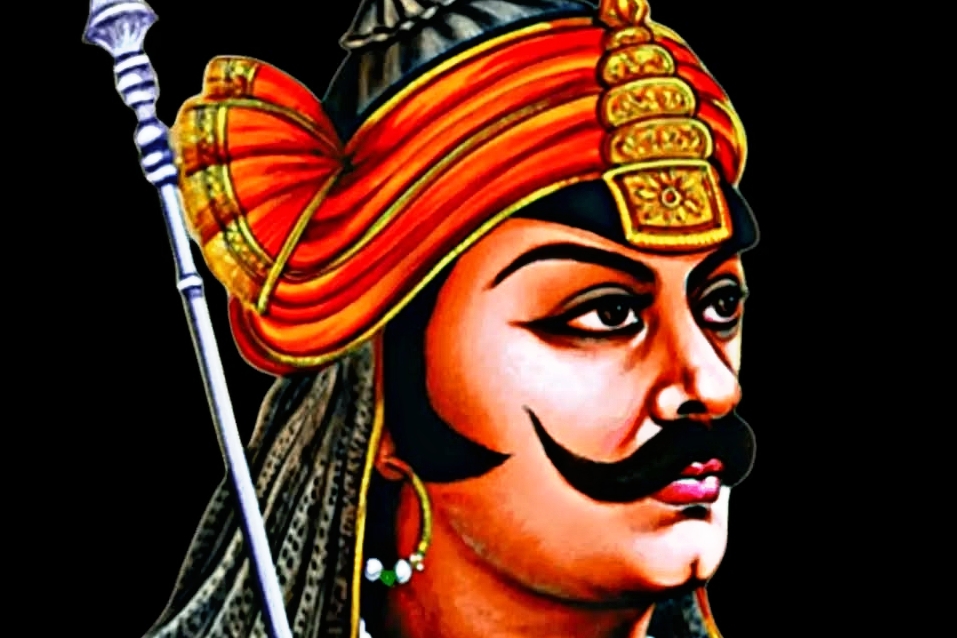
Maharana Pratap was a man of great simplicity and integrity. Despite being a king, he led a frugal life, prioritizing the welfare of his people over personal comfort. His humility and sense of justice earned him the unwavering loyalty of his subjects.
Pratap was married multiple times, as was customary among Rajput rulers. His queens played significant roles in supporting his resistance against the Mughals. He was also a devoted father to his children, particularly his eldest son, Amar Singh I, who succeeded him as the ruler of Mewar.
Death and Legacy
Maharana Pratap passed away on January 19, 1597, at the age of 56, following injuries sustained in a hunting accident. His death marked the end of an era, but his legacy endured as a beacon of inspiration for generations.
Today, Maharana Pratap is celebrated as a symbol of Indian resistance against oppression. His life is commemorated in literature, art, and monuments, including the Maharana Pratap Memorial in Udaipur.
Conclusion
Maharana Pratap’s biography is a story of unyielding courage, resilience, and patriotism. He stood firm in the face of overwhelming odds, choosing honor over compromise and independence over submission. His life serves as a reminder that true greatness lies in standing up for one’s principles, even in the most challenging circumstances.
Maharana Pratap remains a timeless icon, inspiring generations to value freedom, self-respect, and perseverance. His legacy, immortalized in the annals of Indian history, continues to shine brightly, celebrating the spirit of a true hero.

